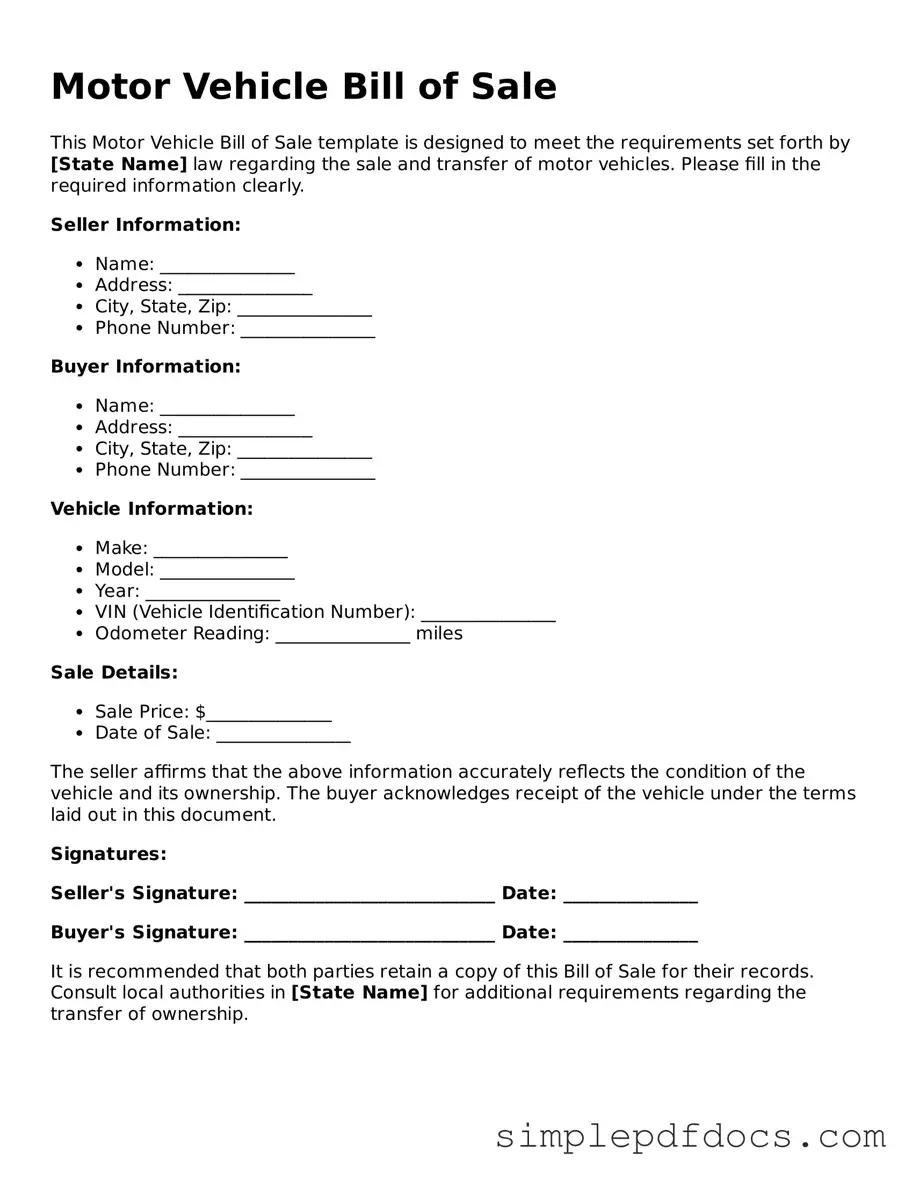The Motor Vehicle Bill of Sale form serves as a crucial document in the process of buying or selling a vehicle, providing a written record of the transaction between the buyer and the seller. This form typically includes essential details such as the vehicle's make, model, year, and Vehicle Identification Number (VIN), which help to clearly identify the specific vehicle being transferred. Additionally, it outlines the purchase price, payment method, and any warranties or guarantees associated with the sale. Signatures from both parties are required to validate the agreement, ensuring that both the seller and the buyer acknowledge the terms of the sale. Furthermore, the form may also include information about the odometer reading at the time of sale, which is important for tracking the vehicle's mileage and maintaining transparency. Understanding the components of the Motor Vehicle Bill of Sale form is vital for anyone involved in the sale or purchase of a vehicle, as it not only protects the interests of both parties but also aids in the proper transfer of ownership and registration with the state. By having this document in place, individuals can avoid potential disputes and ensure a smoother transaction process.
